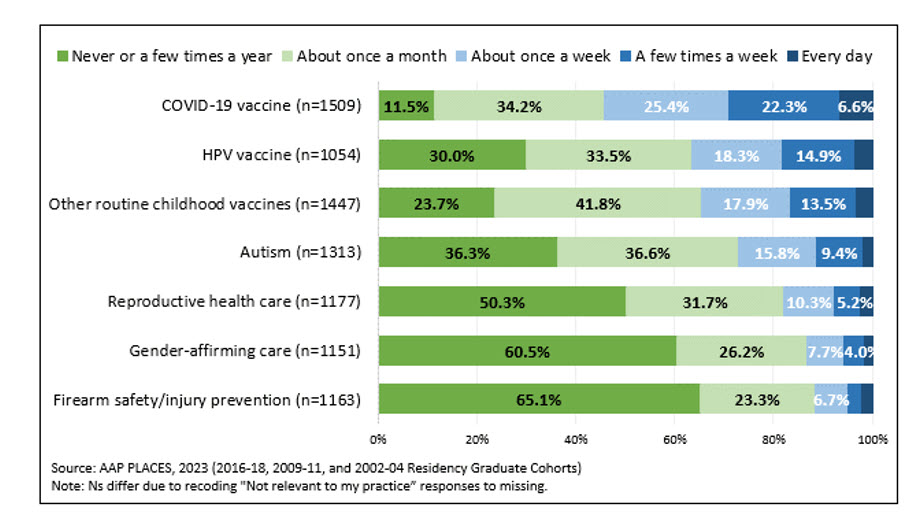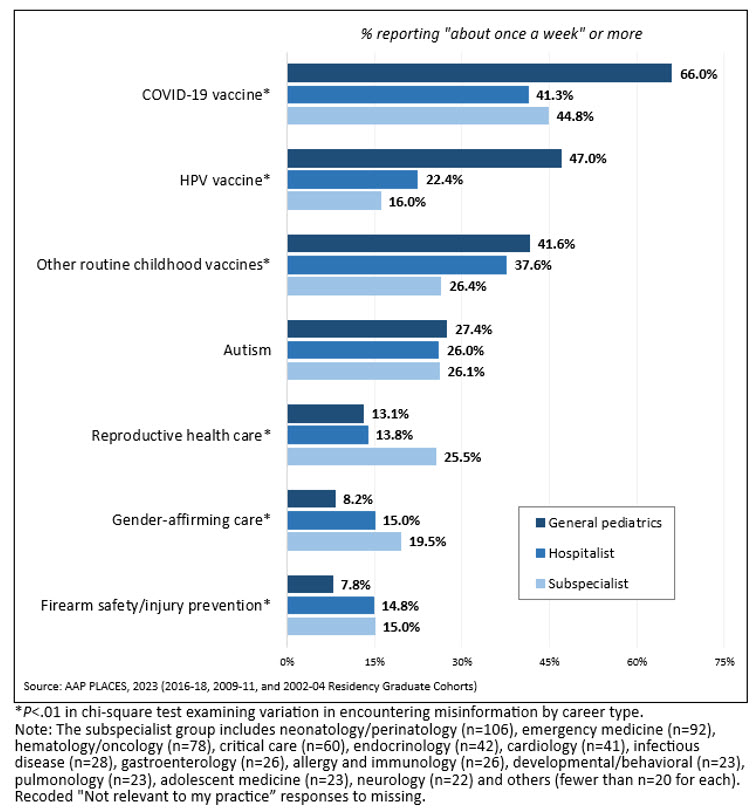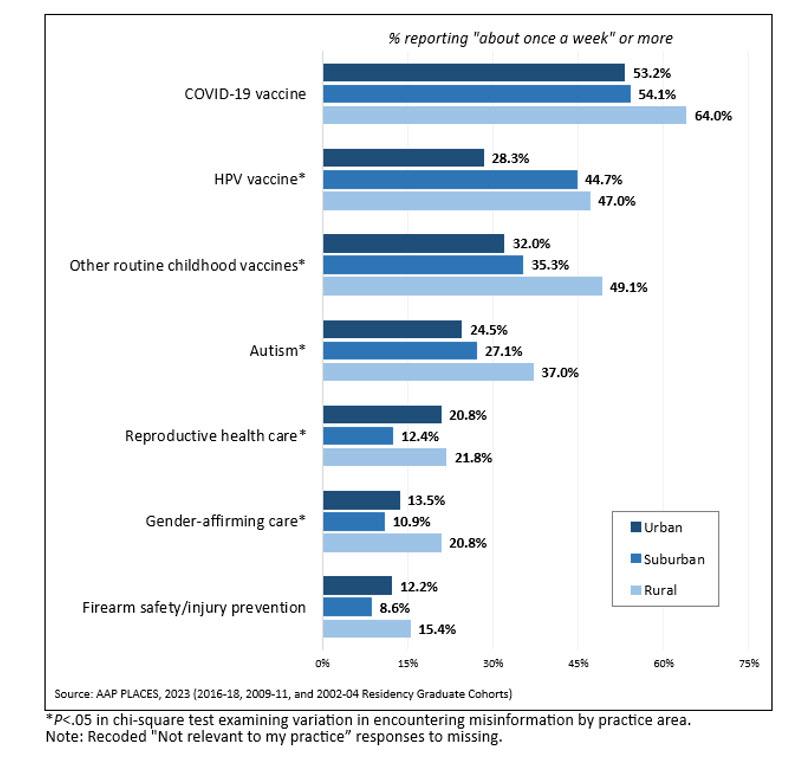Gottschlich E, Byrne B, Frintner M,
Presented at the 2024 Pediatric Academic Societies Annual Meeting
Background: In 2021, the US Surgeon General declared health misinformation a serious threat to public health. Little is known about pediatricians’ experiences with health misinformation.
Objective: Examine 1) pediatricians’ frequency of encountering health misinformation from patients and their families and 2) variation in encountering misinformation by career type, practice area, and region.
Methods: National weighted survey data collected in 2023 from the AAP Pediatrician Life and Career Experience Study (PLACES), a longitudinal cohort study. 41% of randomly selected pediatricians enrolled in the study in 2012 (2009-11 and 2002-04 residency graduates) and 34% enrolled in 2019 (2016-18 residency graduates). Respondents were asked how often patients or families refer to misinformation on 7 health topics (never or a few times a year; about once a month; about once a week; a few times a week; every day).
Chi-square examined variation in encountering health misinformation at least once a week for each of the 7 health topics by career type (general pediatrics; hospitalist; subspecialist), practice area (urban; suburban; rural), and region (Northeast; Midwest; South; West).
Results: Survey participation was 66% (analytic n=1674). Overall, PLACES pediatricians reported encountering misinformation on several health topics frequently, especially around vaccines (Figure 1). More than half (54.3%) had patients/families refer to misinformation about the COVID-19 vaccine about once a week or more; one third encountered misinformation about the HPV vaccine (36.5%) and other routine childhood vaccines (34.5%) at least weekly.
Chi-square tests indicated experiences varied significantly by career type (Figure 2) and practice area (Figure 3). General pediatricians were most likely to encounter misinformation on vaccines weekly, while misinformation on reproductive and gender-affirming care was more common among subspecialists. Those practicing in rural areas were most likely to encounter vaccine misinformation. Experiences were similar across the US, with only a few regional differences found: encountering misinformation on a weekly basis was more common in the West and less common in the South for the COVID-19 vaccine (West=58.6%, Midwest=58.3%, Northeast=55.1%, South=49.0%; p<.05) and other routine childhood vaccines (West=40.9%, Midwest=35.0%, Northeast=32.4%, South=31.7%; p<.05).
Conclusion: In 2023, encountering misinformation on the COVID-19 vaccine, the HPV vaccine, and other routine childhood vaccines was common among PLACES pediatricians, particularly those practicing general pediatrics and in rural areas.
Figure 1. Percentage of PLACES Pediatricians Encountering Misinformation from Patients/Families During Patient Visits Regarding Various Health Topics

Figure 2. Percentage of PLACES Pediatricians Encountering Misinformation from Patients/Families During Patient Visits Regarding Various Health Topics by Career Type

Figure 3. Percentage of PLACES Pediatricians Encountering Misinformation from Patients/Families During Patient Visits Regarding Various Health Topics by Practice Area

Last Updated
05/21/2024
Source
American Academy of Pediatric